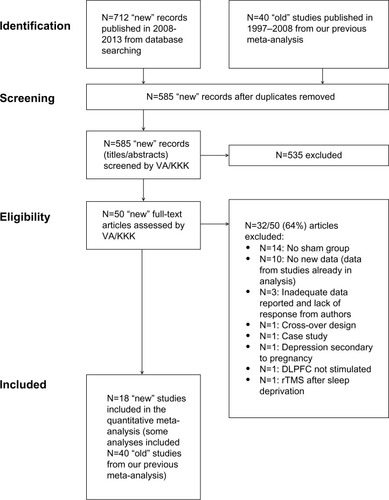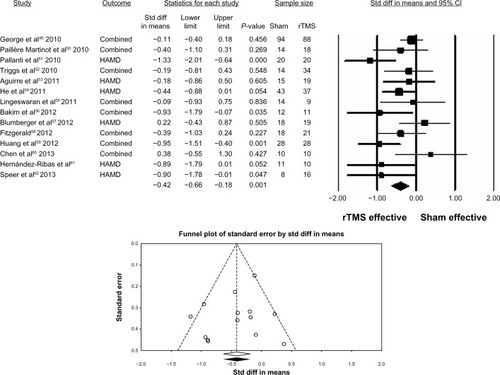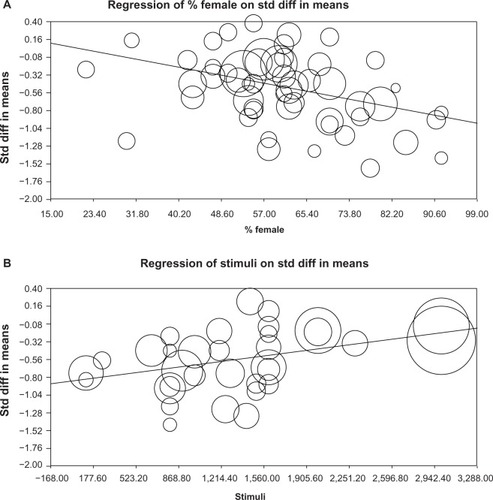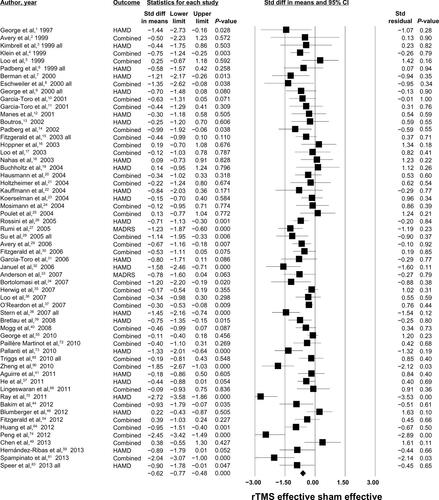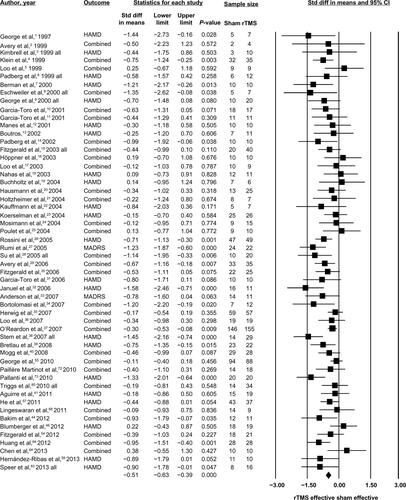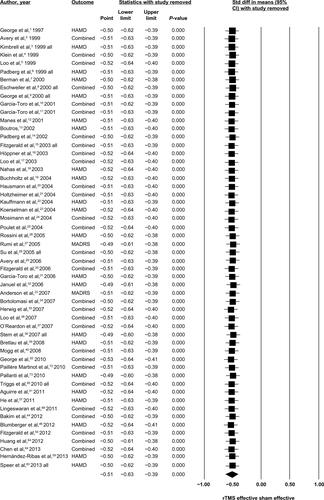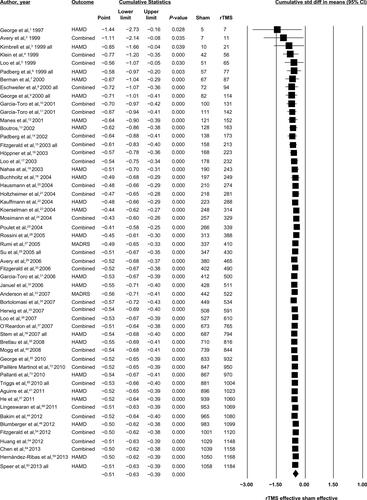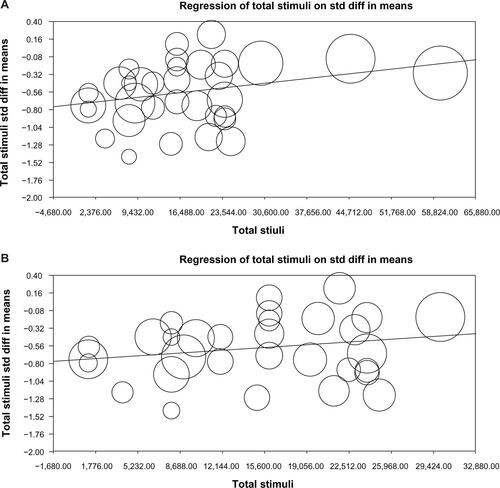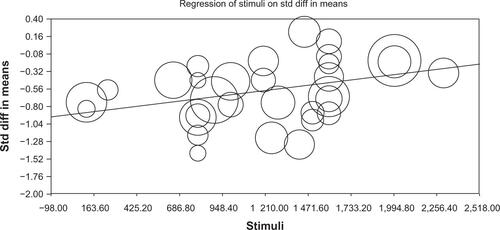Figures & data
Table 1 Details of the systematic search strategy (all searches were performed in English with no language restrictions)
Table 2 rTMS parameters in the N=18 studies included in the current meta-analysis
Table 3 Patient characteristics and depression scores in the active rTMS and sham groups in N=18 studies
Table 4 Results of the random-effects meta-analysis of the N=14 “new” studies (2010–2013) and all N=54 studies: N=40 “old” studies (1997–2008) and N=14 “new” studies
Table 5 Random-effects subgroup analyses and meta-regressions of the change in depression scores (baseline – final) after rTMS compared to sham in N=54 sham-controlled studies published in 1997 – August 2013
Table S1 A list of N=40 “old” studies on the association between rTMS from our previous meta-analysis (unpublished). These studies were included in sensitivity and moderator analyses in the current study
Table S2 A list of N=50 studies on the association between rTMS and depression assessed in full-length and reasons for exclusion from the current meta-analysis
Table S3 Location (country) where the N=54 studies published from 1997 to August 2013 were conducted
